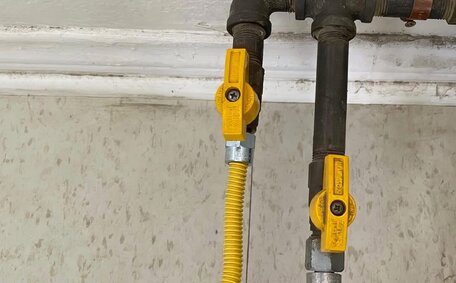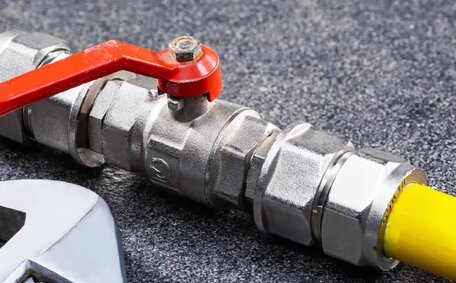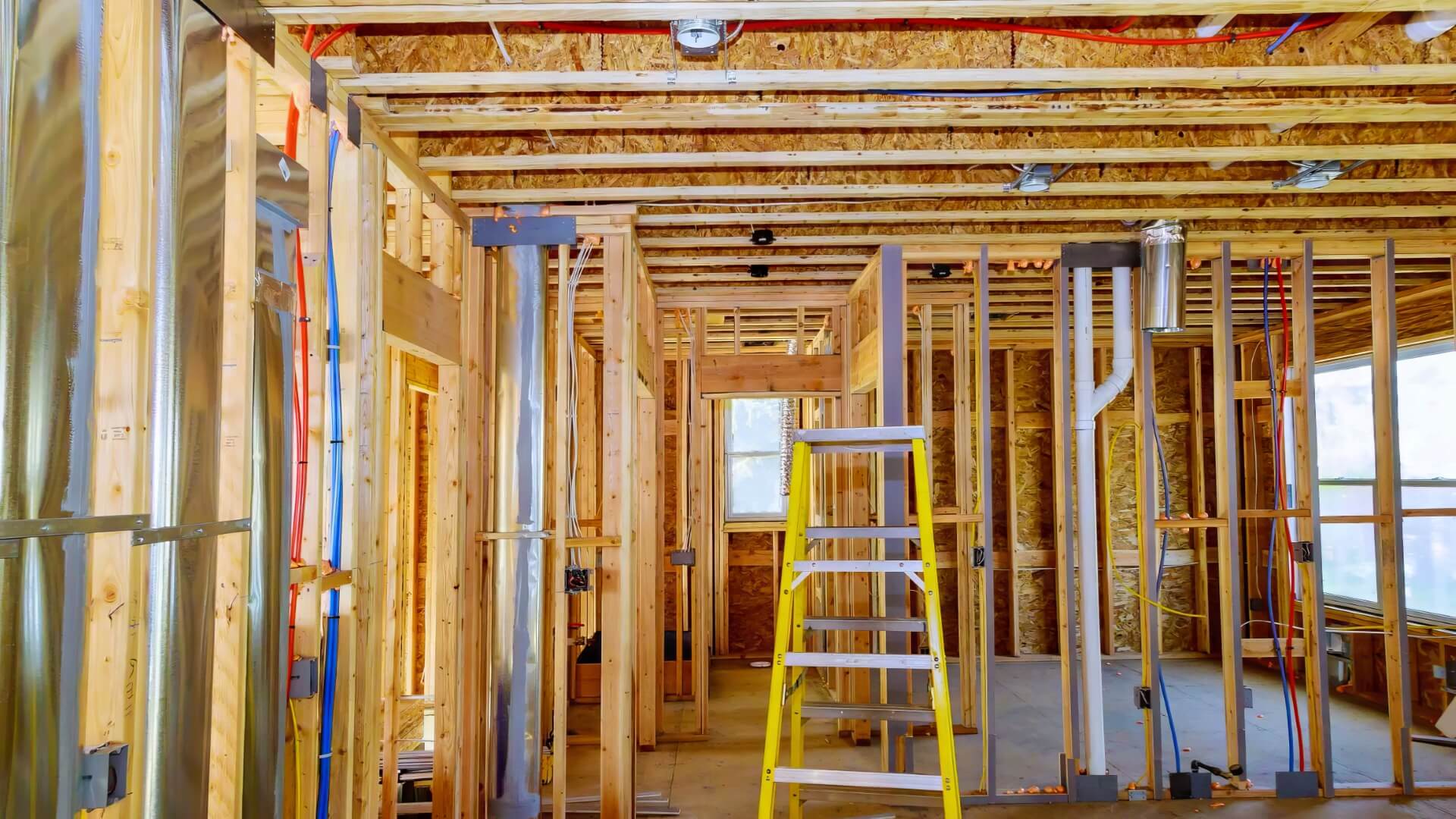
Natural Gas vs. Propane: What’s the Difference?
Propane and natural gas are popular fuel sources, but have different origins and properties. Propane delivers more BTUs per cubic foot. Natural gas is piped underground to homes.
Read MoreAustralian homes are required to comply with safety standards for hot water systems to mitigate scalding risks. When installing or maintaining systems, licensed plumbers must follow the Plumbing Code of Australia’s standards for tempering valves, temperature control, and delivery temperatures.
Safety regulations focus on protecting vulnerable individuals, such as young children and the elderly, from acute scalding hazards. Water from taps exceeding 50°C can result in third-degree burns within just five seconds.
All newly installed electric hot water systems must also comply with efficiency regulations to reduce greenhouse gas emissions. Energy-efficient options include heat pumps, solar hot water systems, and gas heaters with clean energy technology.
Qualified and licenced plumbers must be employed for the installation or maintenance of hot water heaters to ensure compliance with all safety and efficiency regulations.
The key safety standard, mandated by the Plumbing Code Australia, for regulating Australian hot water systems at 50 degrees centigrade, is a crucial consideration. Importantly, tap and outlet water temperatures must be capped at 50°C to prevent scalding.
This mandates that in residential settings, water heaters must store hot water at a minimum of 60°C to prevent Legionella bacteria growth.
There are special allowances for facilities with vulnerable occupants like hospitals, nursing homes, or childcare centres. These sites can store hot water at a minimum of 70°C but must fit tempering valves on all hot water outlets used by vulnerable people to automatically mix with cold water and reduce temperatures below 50°C.
The Plumbing Code of Australia mandates that a licensed plumber install all water tanks and hot water systems to meet safety and efficiency standards. Additionally, Australian/New Zealand Standard AS/NZS 3500.4:2015 mandates that all hot water storage systems have a hardwired temperature control device to regulate storage and delivery temperatures for safety.
To prevent scalding injuries, regulations exist to thwart the dangers hot water produces, namely its temperature in residential settings must not exceed 50°C. Water stored in heaters should be at least 60°C to control bacteria growth, but mixing valves then reduce temperatures to a safe level.
Water hotter than 50°C can cause third-degree burns in less than 5 seconds of exposure. Many people, including young children, elderly individuals, and those with disabilities are at the highest risk.
In care facilities for vulnerable people, hot water can be stored up to 70°C to thoroughly kill bacteria. However, tempering valves must mix supply down to 50°C or less before reaching any resident water outlets.
Installation of tempering valves, thermostatic mixing valves, and efficient storage systems by qualified plumbers is critical for your hot water system. There are different types of reliable temperature controls on heaters providing an automated defence against unsafe hot water delivery.
Australian regulations mandate that only qualified and licensed plumbers carry out installations, maintenance, or repairs of hot water systems.
Professionals must complete a Certificate III in Plumbing and fulfil the necessary work experience to become licensed plumbers. Licencing is evidence of a plumber’s extensive technical skills and expertise, particularly in temperature control devices, gasfitting, and compliance with Australian Standards.
Certified plumbers ensure the correct water temperature and compliance with safety regulations for all hot water system tasks. This includes the correct installation of tempering valves, thermostatic mixing valves, and heater controls to prevent scalding.
Routine maintenance by qualified plumbers helps maximise heater efficiency even after they install your hot water temperature regulation system, ensuring a longer lifespan. Annual servicing examines system components, detects early issues, and guarantees optimal functionality.
With severe penalties for non-compliance, it is essential Australians only engage government-approved plumbers displaying the proper licencing and certification for all hot water system installations, repairs and maintenance.
Homeowners must ensure their home’s hot water system complies with all safety standards. This includes:
As landlords of rental properties, there is an obligation to provide and maintain a compliant hot water system under liveability standards. Key responsibilities include:
Tenants renting a property can take precautions with the hot water system provided, such as always looking to run cold water first to gradually reach a safe temperature when using taps or showers and keeping young children at a safe distance. Understanding safety risks is also important.
Tempering valves and thermostatic mixing valves are essential in reducing scalding risks posed by hot water. Australian regulations mandate that all residential and commercial hot water installations must include one or both devices.
A tempering valve blends cold water into the hot line, ensuring outlet temperatures stay below 50 degrees, typically installed adjacent to the water heater.
Thermostatic mixing valves perform a similar function but ensure the hot water tap at individual fixtures like taps and showers is safe. They mix hot and cold water to maintain a consistent, safe outlet temperature below 50°C, even if hot water supply temperatures fluctuate.
The PCA stipulates that all new residential water heaters must have a tempering valve. Thermostatic mixing valves must also be fitted on bathroom and ensuite showers in private residences. Additionally, taps and showers in early childhood centres, healthcare facilities, public amenities and other sites for vulnerable people require compliant thermostatic valves.
Only government-approved plumbers with extensive training and certification can install tempering valves and thermostatic mixing valves. Annual safety checks help guarantee ongoing functionality and compliance.
Tempering valves are vital safety devices installed on residential and commercial hot water systems to automatically mix cold water into hot water lines. This regulates temperatures to a safe level below 50C before delivery to taps and outlets, preventing accidental scalds.
Tempering valves consist of a tempered water outlet, cold water inlet, hot water inlet, and thermostatic mixing chamber inside a sturdy metal housing. The valve’s piston meters cold water accurately to maintain an outlet temperature beneath 50C, accounting for varying supply temperatures.
When hot water from the storage tank enters the valve, a temperature-sensitive wax element ensures your tap receives consistently safe water.
As water hot enters, temperatures are monitored constantly via the wax element and piston mechanism to maintain a consistent tempered water output between 40-50C. Should supply temperatures dip below 60C, the contracting wax element adjusts the cold water mix to stabilise the outlet temperature. All hot water tank components are calibratable for fine tuning.
Tempering valves offer two key safety benefits:
Ensuring compliance with Australian Standard AS3498, plumbers install tempering valves on hot water systems to prevent severe burns. This provides a crucial passive engineering safeguard against excessively hot water, particularly protecting vulnerable groups.
Only qualified plumbers can install tempering valves due to the technical expertise and precision calibration required. Regular maintenance checks help validate ongoing performance and safety.
Homeowners must engage qualified plumbers with the appropriate licencing and certifications to secure hot water safety via tempering and thermostatic mixing valves.
When installing new systems or servicing existing valves, plumbers must follow manufacturer instructions precisely and calibrate equipment to deliver temperatures below 50°C. Australian Standard AS4032.1 outlines the stringent requirements installations do need to follow.
After installation, homeowners can set and run the hot tap and other fixtures for around 1 minute to test that the tempered temperatures remain under 50°C despite pressure fluctuations. Any readings higher than the safe limit require further calibration or maintenance.
To validate ongoing performance, tempering valves need servicing every 1-2 years by licenced technicians, involving disassembly, inspection, and replacement of internal components like pistons and thermostatic wax elements if build up or wear is present.
Annual maintenance checks of thermostatic mixing valves are also essential to ensure the water is never too hot. Plumbers remove valve handles, conduct visual inspections of exposed parts, ensure smooth handle rotation indicating functionality, and replace if faults are detected.
To reduce energy consumption and greenhouse gas emissions from hot water systems, Australia mandates minimum energy performance standards under AS/NZS 4234. Efficient electric, gas, heat pump, and solar hot water systems must meet stringent energy rating labels like MEPS and GEMS.
From April 2022, there are different energy requirements; all new hot water system installations must have a 6 star energy rating for electric heat pump or gas systems, representing a higher efficiency standard for electric storage or instantaneous types. Higher ratings equal better efficiency and lower running costs.
Upgrading from older, less efficient systems to instantaneous water heaters can yield cost-effective benefits in the long term. New solar heat pump systems with clean energy technology can cut utility bills by up to 60% while meeting energy regulations.
Regular servicing ensures optimal performance of electric hot water systems. Qualified plumbers can advise on efficiency improvements to lower carbon emissions and costs through rebates, incentives, or continuous flow upgraded hot water systems.
The WaterMark Certification Scheme helps ensure hot water products like tempering valves, thermostatic mixing valves, heaters and storage tanks meet strict safety, reliability and efficiency standards under Australian regulations.
Certified products display a WaterMark logo indicating they are fit for purpose and compliant. This gives homeowners, plumbers and regulators confidence in product performance. Watermark approval is overseen by the Australian Building Codes Board (ABCB).
Australian households can receive generous technology certificates STCs when undertaking a water system installation for new efficient systems with WaterMark-certified components. Hot water systems featuring solar, heat pump, or gas technologies might qualify for Small-scale Technology Certificates (STCs), reducing upgrade costs if they meet renewable energy targets.
STCs equate to an upfront discount which can influence your decision on supply and installation. A gas, electric heat pump or solar hot water system in a household of 4 may receive $4,740 total in STC rebates. Using certified plumbers registered with the Clean Energy Regulator streamlines rebate claims.
When selecting a new hot water system, Australians should prioritise energy-efficient models that align with safety regulations. Electric heat pump and solar hot water systems with a minimum 6 star energy rating are ideal choices that reduce running costs and emissions.
Installing tempering and thermostatic mixing valves is compulsory to prevent scalding injuries. Only WaterMark-approved systems installed by licenced plumbers will comply fully with the Plumbing Code of Australia.
Installing an efficient system can lead to significant rebates, as solar hot water systems may be eligible for STCs to subsidise supply and installation. New systems also improve reliability over older electric storage tanks.
Seeking advice from qualified plumbers is highly recommended when choosing a suitable, eco-friendly hot water system. Professionals will identify the most cost-effective and compliant system while handling all safety-critical aspects of installation and configuration.
Australian hot water system regulations continually evolve with technological advancements and an increasing emphasis on safety, efficiency, and sustainability. It is important for homeowners, landlords, tenants and industry professionals to stay informed on the latest standards.
There are several ways to keep abreast of hot water legislation updates:
Staying educated and seeking more information on evolutions in hot water regulations helps Australians maintain safe, efficient and compliant systems. It also ensures plumbers install and service heaters correctly. Ultimately, keeping legislation knowledge current provides national consistency in effective scalding risk reduction.
Propane and natural gas are popular fuel sources, but have different origins and properties. Propane delivers more BTUs per cubic foot. Natural gas is piped underground to homes.
Read MoreUpgrading a gas meter improves safety and may be necessary over time. Our experienced team can guide you through the process, costs and timeframes involved to upgrade your gas meter.
Read MoreIf pipe relining fails due to severe damage, replacement may be required. We provide affordable pipe repairs in Sydney without excavation. Call today for pipe assessments. Our expert team will determine if pipe relining or full replacement is needed.
Read MoreWoollahra, 2025 NSW
We will call back as soon as possible.




